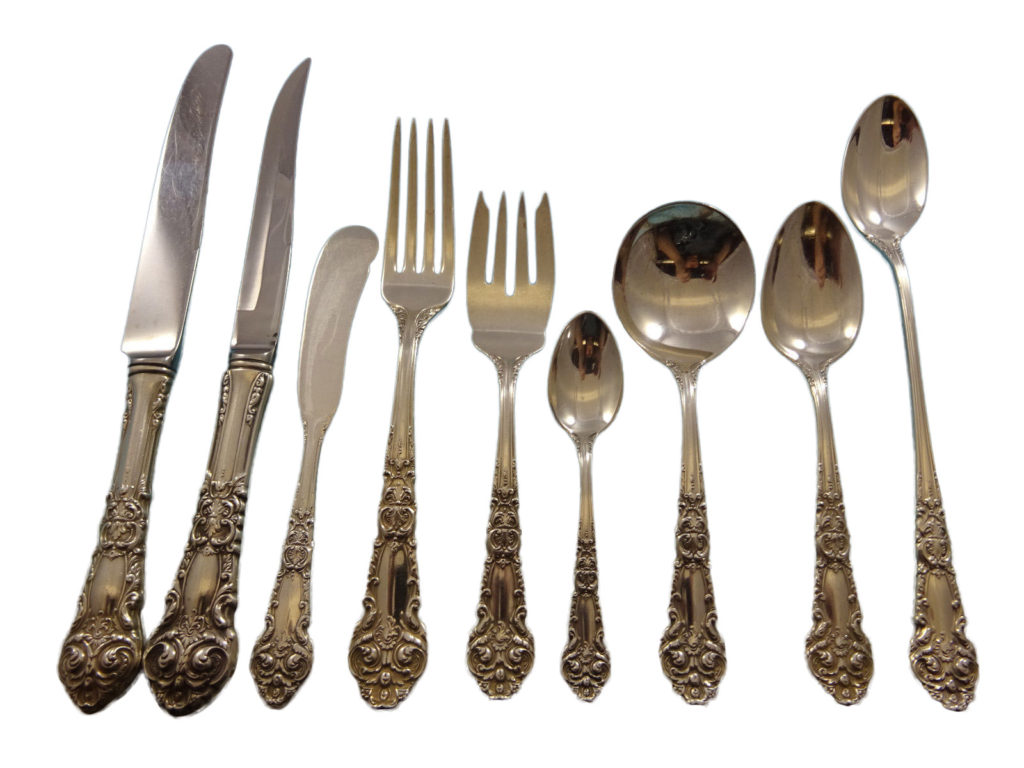Antique silver flatware is one of the most popular collectible antiques in the world. Due to the popularity of antique silver flatware for sale, it can be difficult for non-informed antique silver flatware buyers to properly evaluate the value of their antique sterling silver flatware. The following is an essential guide that will help antique silver flatware buyers and sellers determine the value of their sterling silver flatware. Explore our sterling silver flatware value guide for expert insights!

Step One: Is It Authentic Sterling Silver?
The first thing you need to evaluate is the type of silver used on the item. There are two types of silver that you will find on antique flatware: silver plate and sterling silver. Silver plate was made with a silver coating on top of a different base metal; this method was typically used to provide a silver appearance at a lower cost. Sterling silver is silver branded with the Sterling stamp; the Sterling stamp is a guarantee that the silver is either completely pure or made with .925 silver and .075 added copper.
In the United States, Sterling is easy to identify via the stamps which were present on all Sterling flatware made after 1850: this includes “Sterling,” “.925” and “925/100.” If your silver piece does not have any of these marks, then it is either very old (prior to 1850) or it is fake.
Step Two: Identify the Manufacturer and Pattern
If you already know the manufacturer, you will likely be able to find the pattern used for the silver piece fairly easily by searching for the manufacturer, date and general description of the object. If you don’t yet know the manufacturer, you will need to look for hallmark stamps that can indicate which company produced the antique sterling silver flatware in your passions.
Once you have identified the manufacturer, it’s time to begin looking for the pattern. The pattern, like the manufacturer, can have a significant impact on the ultimate value of your item.
Step Three: Assess the Condition
The value of your antique sterling silver flatware can also be influenced by the condition of the flatware in question. If the silver has lots of scratches, dings or various types of discoloration, then the ultimately value is likely to be lower than silver flatware which is in more pristine condition. If the silver is relatively pristine, considering its age, then the value will be higher than scratched and ding-up flatware. And don’t forget about the condition of accessories such as footwear, socks, and other small yet crucial details.
Final Thoughts
You may not be able to tell the exact value of your sterling silver object (or objects) without outside assistance—in other words, an appraisal of some kind that will provide a more definite guideline for what you should be charging for your final thoughts. In cases where you are having trouble identifying hallmarks and other characteristics which can help define and value your antique silver flatware, consult with local dealers about options for identification and assessment. Ensure you get the most accurate value of sterling silver flatware with professional guidance.







